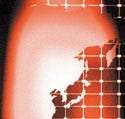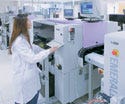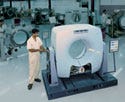Medical Device Regulatory Update: China and Japan
REGULATORY
|
The Asian economy has experienced tremendous gross domestic product (GDP) growth over the past decade and is expected to continue at a healthy pace for the next several years. The medical device market in particular has been growing rapidly. More and more companies are going to Asia to sell and manufacture medical devices. In addition, Asian governments are developing new or more-rigorous regulations to raise the quality of medical devices in their countries to international standards. This article highlights some of the recent regulatory developments for medical devices in China and Japan. A subsequent article will focus on the regulatory climate in other Asian countries, including South Korea, Singapore, and India.
China
The regulatory environment for medical devices in China has undergone tremendous change in the past few years, beginning with the revision of the regulations and reorganization of the regulatory authority in 2002. The State Food and Drug Administration (SFDA), which oversees regulation of food, drugs, and medical devices, has made significant efforts to raise the quality of regulation in China, including cracking down on corruption, strengthening the supervision of medical device factories, and improving SFDA's efficiency.
Improving Medical Device Testing
This year SFDA has made a concerted effort to improve medical device supervision and increase the efficiency of medical device testing in China. In the past, a national testing center would focus on only one specific type of medical device. Now, these national testing centers perform tests on multiple device types, both to increase efficiency and to increase competition. In addition, SFDA opened more than 20 provincial-level medical device supervision and testing centers. SFDA also implemented a comprehensive professional training program for medical device testing officials and announced plans to establish a database of experts for medical device inspections.
The 10 national testing centers are accredited by the China National Accreditation Committee for Laboratories and the General Administration of Quality Supervision, Inspection, and Quarantine. The centers are not only responsible for supervising product quality, testing, and evaluation, but also for studying and proposing new technical standards. The centers are as follows:
• Beijing Center for Medical Device Quality Supervision and Testing.
• SFDA Medical Device Quality Supervision and Testing Center of Peking University.
• Center for Medical Devices for the National Institute for the Control of Pharmaceutical and Biological Products.
• SFDA Shanghai Center for Medical Equipment Quality Supervision and Testing.
• Tianjin Medical Instrumentation Inspection Center of the SFDA.
• SFDA Wuhan Quality Supervision and Testing Center for Medical Devices.
• SFDA Jinan Quality Supervision and Inspection Center for Medical Devices.
• SFDA Shenyang Center for Medical Equipment Quality Supervision.
• SFDA Guangzhou Quality Supervision and Inspection Center for Medical Instruments.
• SFDA Hangzhou Center for Medical Equipment Quality Supervision and Testing.
New Pricing Policy for Medical Devices
|
In China, a new policy seeks to lower sales margins for medical devices that are sold to hospitals. |
In early 2006, the National Development and Reform Commission (NDRC) announced that it was putting a cap on the prices of medical devices in China due to the devices' rapidly rising costs. Medical devices currently travel through several parties from production to the final user, and manufacturers, distributors, and hospitals all profit along the way. The device industry is highly underregulated in China, and NDRC hopes that this new policy will help eliminate some of these extremely high profits.
The notice outlines the following six changes:
• Establish a medical device price-monitoring system.
• Periodically announce market prices for medical devices.
• Implement more control over the profit margins over the logistical channels for medical devices.
• Lower the sale margins for medical devices sold to hospitals.
• Issue controls on manufacturers' prices and China's port prices for medical devices.
• Strengthen price monitoring and inspection enforcement strategies.
This is not the first time that China has issued price controls on medical devices. In 2003, NDRC promulgated requirements to control medical device prices, but the regulations were not strongly enforced. The next year, eight provinces centralized the control of all bidding and purchasing of medical devices, and as a result, prices of a few disposable medical devices did drop.
However, the most recent notice specifically targets disposable and implanted medical devices. The price of disposable medical devices can increase only 40% or less from manufacturer to patient. Implanted medical device prices can increase only 25% from manufacturer to patient for products priced below RMB 5000 (approximately $617) and 20% for products priced above RMB 5000.
The notice also states that hospitals' profit margins cannot be more than 10% for disposable medical devices priced at less than RMB 500 (approximately $62) and cannot be more than 5% for disposable medical devices priced between RMB 500 and RMB 5000. If a medical device costs more than RMB 5000, the maximum profit margin for hospitals cannot be more than RMB 250 (approximately $30).
NDRC is working with the China Association of the Medical Device Industry and the China Price Association to implement these new policies. Although the government has officially announced the new price restrictions, it remains to be seen whether they can be enforced. Some experts question the ability of NDRC to monitor price increases and manage all medical device cases.
Increased Inspection of Medical Device Documents
Although medical device product document regulations have been in place since 2002, many foreign medical device manufacturers still do not comply with requirements. As a result, SFDA has been randomly inspecting medical devices to ensure that the product documents are in compliance with medical device documentation regulations.
For example, many medical device companies have not updated their labels in accordance with the new regulations. Many medical device products also fail to include Chinese versions of key documents such as warnings or user manuals.
SFDA has been conducting more random and unannounced inspections on both medical devices and pharmaceuticals to determine the true conditions of the products. It is important for foreign medical device companies to make sure that all documents and information strictly adhere to the regulations for medical device packaging and documentation in China. Although many of the regulations are similar to those in place in other countries, there are certain requirements that are specific to China.
For example, China issues companies a unique registration number that must be indicated on the medical device package as well as on all documentation. SFDA will not accept any products that fail to abide by these detailed regulations, and there are plans to increase random inspections and to shut down all medical device manufacturers that do not comply.
Devices with documents that do not adhere to SFDA regulations will be stopped at the Chinese border. If the device is already being sold in China, SFDA will prohibit its sale until the proper paperwork and documentation are submitted.
Standardizing Registration of Medical Electrical Equipment
Earlier this year, SFDA made an official statement emphasizing the importance of medical electrical equipment safety. The organization is specifically focusing on enforcing the GB 9706.1-1995 standard for medical electrical equipment. This set of national standards has about 100 requirements, including more than 50 model-specific testing requirements.
Now all medical electrical equipment registration applications must include a completed GB 9706.1-1995 compliance test report conducted either by the applicant or a third party. Companies applying for product registration renewal must conduct supplemental registration testing for items that have not been tested according to GB 9706.1-1995, unless the applicant can provide a GB 9706.1-1995 compliance test report with the registration renewal application.
According to SFDA, all manufacturers of registered medical electrical devices need to submit a GB 9706.1-1995 compliance test report by December 31, 2007. In addition, if the applicant conducts the testing, SFDA will evaluate the testing facility to make sure it meets regulatory standards.
New Regulation on Medical Device Quality System Management
|
Although more and more companies are manufacturing and selling medical devices in Asia, regulations have not consistently kept pace. |
SFDA recently drafted a regulation called “Criterion for Medical Device Quality System Management” to strengthen medical device quality. The law outlines general requirements for medical device quality system management, covering issues such as design, production, installation, and sales. It integrates the ISO 13485 standard and the U.S. FDA quality system inspection technique along with certain requirements specific to China.
The regulation requires managers at medical device manufacturing plants to establish clear quality control objectives and to conduct periodic reviews of the plants. In addition, manufacturers must document all design and development procedures for production. The regulation provides guidance on how to document design and development procedures and verify performance designs.
Medical device manufacturers will also be required to record each batch of medical devices, including the amount in each batch and how many were distributed throughout China. Before batches are sent out, device manufacturers conduct inspections on all products to ensure that each medical device category conforms to the standards for that type of device.
If a product does not meet standards, it cannot be distributed. To control the quality of devices, manufacturers should also take preventive actions and analyze past performance to ensure that mistakes are not repeated.
Strengthening Supervision of Medical Device Manufacturers
In early 2006, SFDA passed a new regulation titled “Provisions on Daily Supervision and Administration of Medical Device Manufacturing Enterprises.” It covers all SFDA procedures carried out for the inspection of medical device manufacturing enterprises, including obtaining a manufacturing license, product registration, quality system inspection, and daily on-site inspections.
The provisions delegate the daily administration and supervision of device manufacturing to SFDA's regional branches. County, municipal, provincial, and autonomous regional SFDA branches will oversee manufacturing within their jurisdiction and will be responsible for all on-site inspection of manufacturing facilities.
All regional divisions must report information about any medical device requiring close supervision to SFDA on June 15 and December 15 each year. Each regional branch must compile the “Catalog of Specially Supervised Medical Devices” and present the information to the SFDA Medical Device Department annually.
Japan
|
From regulatory approval to device production, Japan's development process is notoriously slow. |
The Japanese regulatory environment for medical devices has changed significantly since the enactment of the Pharmaceutical Affairs Law (PAL), which was implemented April 1, 2005. The regulatory authority is the Ministry of Health, Labor, and Welfare (MHLW). The Pharmaceutical and Medical Devices Agency (PMDA) is an administrative agency that shares responsibility for medical device regulation.
Medical Device Industry Gives Feedback on Government Policy
On June 9, 2006, PMDA officials met with representatives from a number of Japanese medical device associations, including the Japan Federation of Medical Device Associations, the Japan Association of Health Industry Distributors, and the medical device committees of the American Chamber of Commerce Japan and the European Business Council. The meeting was held to solicit industry opinion and feedback on the government's medical device policy. Industry representatives expressed interest in several initiatives, including the following:
• The establishment of unofficial discussion committees to help accelerate the approval of devices approved outside Japan (equivalent committees already exist for pharmaceuticals).
• Increasing the capacity and flexibility of the device approval process through an increase in PMDA review staff.
• Greater flexibility in using foreign clinical results for device approvals.
• Promoting global clinical trials.
• Facilitating the use of good clinical practice and quality management systems.
• Promoting a prominent medical institution as a “national center” to provide leadership in trials of high-tech devices.
• Promoting physician-guided clinical trials.
MHLW Notice on Registration Updates
The revised PAL requirements for medical device registration are more comprehensive than those under the old system. Because most medical devices in Japan were approved before the regulation was implemented last year, they are not compliant with the new standards. However, their registrations are still valid. Devices whose registration dossiers were submitted before that date but approved later fall into the same category.
MHLW has notified companies that registration holders must supply the government with new information to bring device registrations up to current standards by March 31, 2008, or when their current registration expires, whichever is sooner. Additionally, a government notice in June said that updated information will only be accepted once. This has caused concern among medical device manufacturers with a large number of devices that require updated information. New requirements include different nomenclature, some rearrangement of information, and new information such as the manufacturing sites of both the device and its raw materials. It is still unclear what the consequences will be for device registrations that do not meet the deadline or are rejected by MHLW.
Possible Setback for PMDA Approval Periods
Registering a medical product in Japan, from the initial application to final approval, is a lengthy process. Many argue that the main reason for long approval periods is a shortage of reviewers at PMDA. As of April 2006, there were 89 new drug reviewers (up from 78 the previous year), and only 28 medical device reviewers. PMDA plans to add at most 27 more total staff by 2009; only some of them would actually be reviewers. At the same time, the Japanese government's administrative reform goals call for a 5% staff reduction across the board by the end of the year, threatening the size of the already-meager staff of PMDA reviewers.
The Japan Pharmaceutical Manufacturer's Association (JPMA) petitioned to the Regulatory Reform and Privatization Promotion Council in July to exclude PMDA from its personnel reduction plans. The association also requested that the number of approval review staff and clinical trial consultants be permitted to double in the short term, claiming that this increase would not strain the national budget if industry fees were increased.
Another complication is that current employment rules prohibit anyone who has worked in medical development in the past five years from being hired as a reviewer. The petition argues that this restriction prevents PMDA from hiring the most qualified people to be reviewers. JPMA president Aoki Hatsuo, PhD, said he believes the threat of harsh punishment should be enough to safeguard against government-industry collusion.
MHLW Reduces Reimbursements on Medical Devices and Drugs
Earlier this year, MHLW announced cuts in reimbursement levels for medical devices and drugs. The revised reimbursement for drugs under the National Health Insurance (NHI) program means an average price cut of 6.7% (or 1.6% on a cost basis) for the pharmaceutical industry. Medical devices were cut by 0.2% on a cost basis.
Of the 13,311 items listed on the NHI scheme, 76% of the items experienced cuts in reimbursement prices. With regard to medical devices, price cuts of less than 15% were implemented immediately, while more-substantial cuts will be implemented in three phases over the course of 2006, with the final cut occurring in April 2007.
In the orthopedic market, for example, hip implants experienced an average price cut of 13%, while knee implant prices were cut by about 7%. Reimbursement on trauma products was reduced by 12%, while spinal products experienced minimal reductions of less than 5%. Other products experienced cuts of up to 20%.
New Labeling Requirements for Medical Devices
The PAL includes changes to medical device labeling requirements, such as appointing a marketing authorization holder (MAH). There are also new GMP requirements and changes in the classification and labeling of medical devices. New information, including the device classification, must be listed on the product insert of all medical devices. The address of the MAH also needs to be included.
Prior to the implementation of PAL, the contact information listed on the packaging could be the company's headquarters; now the contact information must be the location where the product's marketing is handled. All devices manufactured overseas should provide the location of the manufacturing site as well. MHLW recommends that revisions of product labels be completed by March 31, 2006.
U.S. International Trade Commission Investigates Competitiveness of Japan's Medical Device Market
The U.S. International Trade Commission is investigating the competitive conditions in Japan and other foreign markets for medical devices and equipment. Japan's regulatory approval process for new medical devices is notoriously slow, and U.S. companies have complained that Japanese regulations are too costly and burdensome. The investigation will compare the regulatory environment in Japan with those of other primary markets for U.S.-manufactured medical devices.
The agency will also analyze any bilateral and multilateral trade agreements that involve regulatory issues to see what implications they have for the U.S. medical device industry. The investigation was initiated at the request of the House Ways and Means Committee and is expected to be completed by March 9, 2007. Public hearings were held in July 2006 and investigators will be sent to Japan and Europe to do some comparative analysis.
Although there are may be similarities in medical device regulations across some Asian countries, they are often very different from one another, and sometimes different from the U.S. FDA regulations. China and Japan are improving their regulations and trying to make them more transparent. With the dynamic regulatory environment in Asia, it is important to stay current on the changing rules in each country.
Ames Gross is president of Pacific Bridge Medical (Bethesda, MD) which consults companies on medical device registration in China and throughout Asia. Nancy Loh is a senior associate at Pacific Bridge Medical.
Copyright ©2006 Medical Device & Diagnostic Industry
About the Author(s)
You May Also Like





.png?width=300&auto=webp&quality=80&disable=upscale)
